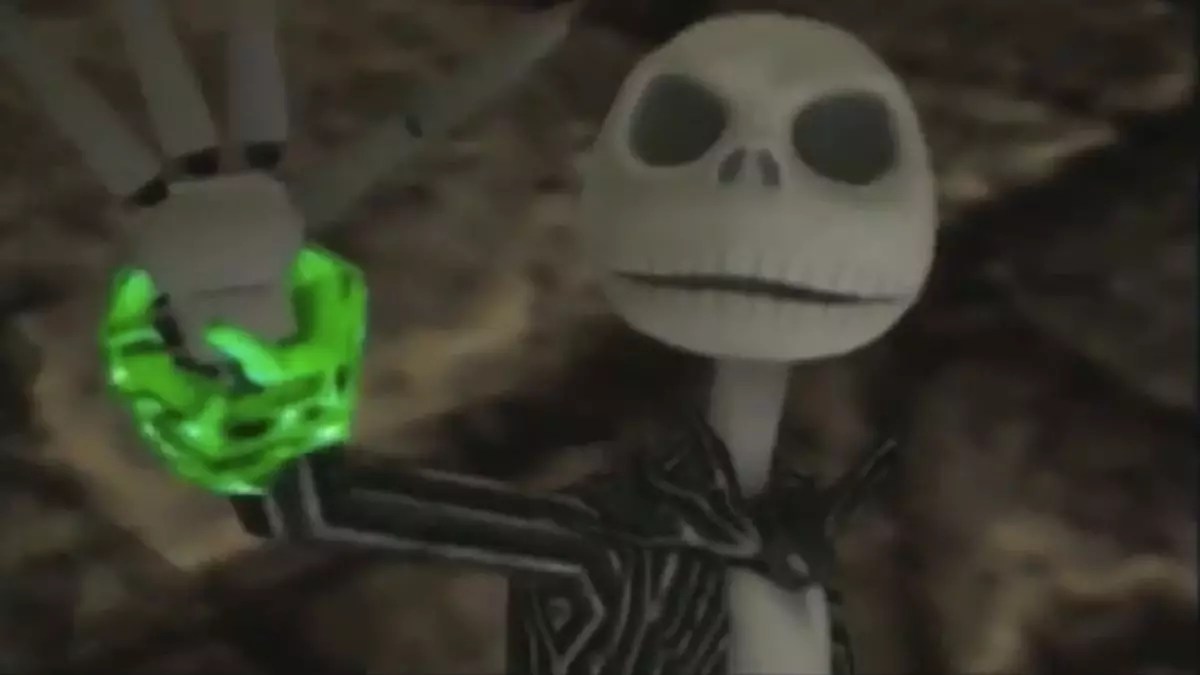Introduction: Merging Holidays with Spookiness
Growing up with a goth sibling opens up a world of imaginative experiences, especially when it comes to holiday traditions. Each Christmas, our family ritualistically gathers around the television to watch Tim Burton’s iconic film, *The Nightmare Before Christmas*. This peculiar tale raises a perennial question: is it a Christmas movie or a Halloween one? With its Christmas-centric narrative, characters like Jack Skellington and even an incarnation of Santa Claus—known charmingly as ‘Sandy Claws’—I firmly advocate that this delightful film belongs more to the Christmas genre. Yet, the holiday spirit of *The Nightmare Before Christmas* extends beyond just its filmic origins. One of the most fascinating adaptations of this narrative is found within the world of video games, particularly in *The Nightmare Before Christmas: Oogie’s Revenge*.
The Eccentric Gameplay Mechanics and Atmosphere
*Oogie’s Revenge* transports players back to Halloween Town, one year after the events of the original film. It ushers Jack Skellington into another round of existential ennui, nudging him to seek new adventures to spruce up an impending Halloween. This time, his task becomes urgent as the resurrected Oogie Boogie wreaks havoc on December 23rd. The game’s appeal lies not just in its storytelling but also in its ability to evoke the iconic atmosphere of the movie. Players embark on a journey across 24 chapters, engaging in missions that primarily hinge on defeating enemies using Jack’s favorite tool: the Soul Robber.
The Soul Robber, a quirky green whip with a hand-like end, evokes nostalgic sentiments reminiscent of slap toys from the early 2000s. Yet, while the weapon is charming, its repeated battle cries become annoyingly ingrained in players’ memories, akin to the infamous catchphrases in beloved games. Jack’s verbal reiteration of “Soul Robber!” while attacking can quickly lead to mental fatigue—though one could argue that it was amusing at first. This accumulation of repetitive dialogue can echo in the ears long after the console is turned off, raising questions about the fine line between charm and monotony in gaming.
The combat system in *Oogie’s Revenge* draws noticeable parallels to hack-and-slash titles like *Devil May Cry*. It emphasizes stringing together combos for better scores, enhancing both the thrill of combat and players’ gaming skills. Fun yet demanding, the game introduces different outfits for Jack—namely the Pumpkin King and Santa Jack—that not only look visually striking but also bestow unique abilities. The choice of outfits adds a layer of customization that enriches gameplay and helps combat various foes uniquely.
The element of difficulty in *Oogie’s Revenge* remains a double-edged sword. For younger players, like an eight-year-old grappling with the game’s mechanics, the challenges can quickly become overwhelming, particularly the boss battles. Here, unique “dance” segments similar to rhythm games demand precise button presses to unleash devastating moves against formidable enemies. While these sequences inject excitement into the battles, they also take away from accessibility for players who might struggle with timing.
There’s profound satisfaction in navigating through Halloween Town, where players can interact with characters from the movie. Despite its occasional shortcomings, the exploratory elements of the game enhance its charm, granting a sense of immersion within a beloved fictional universe. For fans of Tim Burton’s work, the opportunity to visit familiar spots and meet iconic characters is a dream realized—even if the game’s mechanics aren’t flawless.
Despite receiving lukewarm reviews upon its release due to polish and balance issues, the emotional weight associated with engaging in this world blurs the lines of critique. For many players, the blend of nostalgia and the unique aesthetic makes the experience worthwhile, overshadowing the game’s quirks. The rhythm of *This Is Halloween*, blended through ambient sounds, spirals players into a deeper appreciation of the setting while frustratingly reinforcing an already prevalent theme throughout gameplay.
In the end, *Oogie’s Revenge* can be viewed as an odd but charming tribute to *The Nightmare Before Christmas*. Its blend of whimsy, combat-driven gameplay, and occasional test of patience amalgamate into a unique holiday experience. You might harbor a love-hate relationship with the game, oscillating between frustration and delight, but it’s hard to dismiss its festive charm. If you’re in the mood for some quirky gothic nostalgia this holiday season, look no further than the unassuming yet extraordinarily memorable *Oogie’s Revenge*. After all, as we gather around each Christmas, it serves as a reminder: the spirit of the season can take on all shapes—and perhaps even a little darkness, too.


Leave a Reply